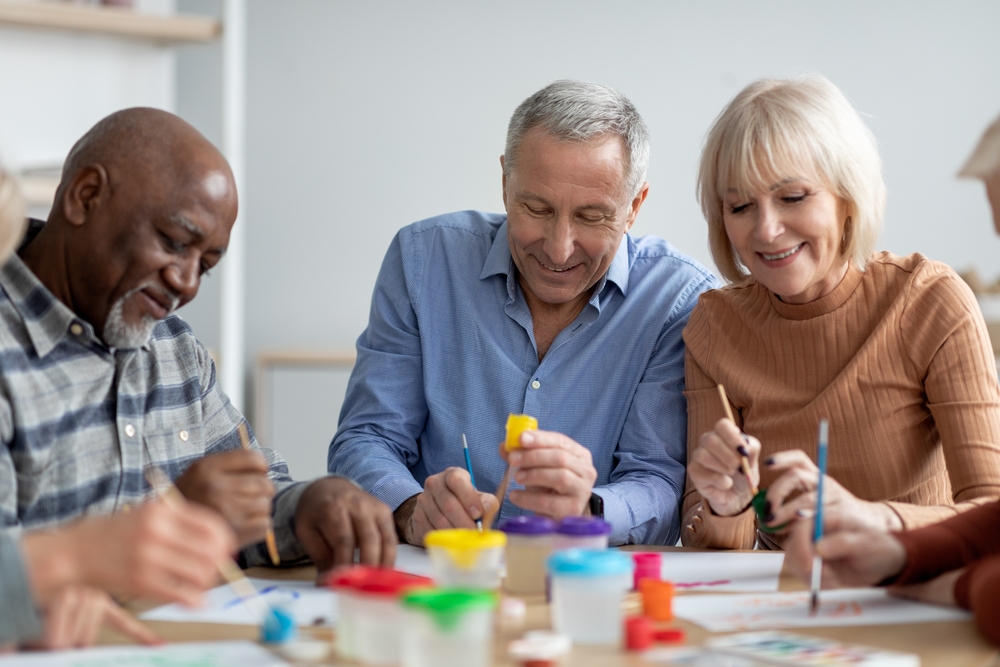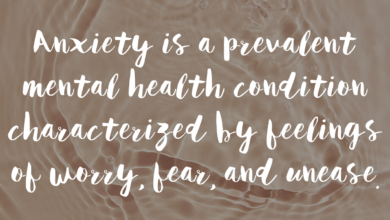Community arts participation linked with wellbeing, life satisfaction and purpose in older adults

Over 3,000 studies provide evidence for the mental wellbeing benefits of arts engagement, including positive affect, personal growth, happiness, life satisfaction, and reduced levels of depression and anxiety (Fancourt and Finn, 2019). Participating in art groups can additionally help develop meaningful social interactions, increase one’s social capital and strengthen social bonds (Fancourt and Finn, 2019). For this reason, with the growing ageing population in many countries, there has been increasing interest in encouraging older adults to take part in community leisure activities.
However, the engagement is often socially patterned with individuals from more privileged backgrounds being more likely to participate in the arts (Mak, Coulter, and Fancourt, 2020), so it’s not clear whether the wellbeing benefits from the engagement were driven by the engagement itself or by the socio-demographic backgrounds of the person. Whilst previous research has attempted to address this by adjusting for important confounders (i.e. factors that could affect both the predictor and outcome) in ordinary least squares regression models, there may still be an imbalance between a group who engage and another group who do not engage in the arts.
To address the issue of confounding bias, a randomised controlled trial (RCT) is often recommended where participants are randomly selected and assigned to one of the two groups: treatment group vs control group. However, for some studies, it is not always feasible and practical to run an RCT, especially on a large sample. In this instance, propensity score matching (PSM) could be used to mimic this experimental research design on observational population-based data (Guo and Fraser, 2015). One major advantage of PSM is that it helps effectively account for the probability of receiving a treatment when a random assignment of the treatment is not available. A recent study, by Jess Bone et al (2022), applied this technique to explore the association between participation in community arts groups and concurrent evaluative (our life satisfaction), experienced (our positive and negative affect), and eudaimonic (our purpose in life, perceived constraints on personal control, and perceived master) wellbeing in older adults.

Research shows that arts engagement is linked with personal growth and reduced levels of depression and anxiety.
Methods
This study used data from the Health and Retirement Study (HRS), a nationally representative study of individuals over the age of 50 in the United States. HRS started in 1992 and follows over 37,000 participants aged 50 years and above every two years.
In this study, the researchers used data collected between 2014 and 2016, in which participation in a local community arts group was measured. At each wave, a 50% subsample of participants were randomly invited to an enhanced interview and given a Leave-Behind Psychosocial and Lifestyle Questionnaire to complete, which included questions on participation in community arts groups and wellbeing. The study sample was therefore restricted to those with complete data on participation in community arts groups, wellbeing outcomes, and all covariates. This left a core sample of 12,055 participants, a combination of both years but participants only completed the Questionnaire in one of the years.
To measure participants’ community arts groups engagement, participants were asked how often they had participated in a local community arts group in the last month. Participants were provided with examples of these groups such as a choir, dance, photography, theatre, or music group. Responses ranged from never to daily (a 7-point scale) and were collapsed into a binary variable (never, not in the last month vs any other frequencies) to reduce the skewness of the responses.
For the outcomes, six wellbeings were analysed and were grouped within the three domains of wellbeing (evaluative, experienced and eudaimonic wellbeing). For evaluative wellbeing, life satisfaction was measured (5 items; a 7-point scale). For experienced wellbeing, positive and negative were measured where participants were asked to describe their effect in the past 30 days with given single-word items (13 items for positive affect and 12 items for negative affect; both with a 5-point scale). Finally, for eudaimonic wellbeing, purpose in life (7 items; a 6-point scale), the perceived constraints on personal control, and perceived mastery scales were measured (both with 5 items and a 6-point scale). All measures were then averaged and standardised.
This study controlled for a set of covariates that might influence the exposure, outcomes, or both. These included demographic covariates (age, gender, marital status and ethnicity), socioeconomic covariates (educational attainment, employment status, household income, neighbourhood safety, and frequency of socialising with friends or family), and health-related covariates (difficulties relating to activities of daily livings [ADLS], difficulties relating to instrumental activities of daily living [IADLS], long term physical conditions and cognition [a summary of immediate and delayed recall test scores]).
In their analysis, researchers applied PSM to address the issues that certain types of individuals may be more likely to participate in community arts groups. They first calculated the likelihood of the participants participating in arts groups based on the observed covariates and produced a propensity score for each participant. Then, they used the propensity scores to match individuals who participated in arts groups (the ‘treatment’ group) with those who did not participate (the ‘control’ group). Matched participants should have almost identical distributions on all observed covariates. Assuming that all important and relevant covariates had been considered within the analysis and that there were no unobserved confounders, PSM simulated a trial with the covariates randomised between groups. Afterwards, researchers used PSM to estimate the difference between the average outcome for arts group participants and the average outcome for the same group under the hypothetical scenario that they did not participate, i.e., the average treatment effect on the treated (ATT).
Results
In the matched sample, results showed that participating in arts groups was positively associated with positive affect, life satisfaction, purpose in life and perceived mastery amongst older adults, compared to those who did not participate. No association was found for negative affect or perceived constraints on personal control.
Results were very similar when the control group was limited to those who never participated in arts groups (i.e., omitting those who did not participate in the last month), and when the treatment group was limited to those who participated at least weekly in arts groups (instead of any participation frequencies). Results were also largely replicated when predicting the outcomes measured in 2018 (i.e., four years after participation in arts groups was measured).

This new study finds that participating in arts groups is associated with positive affect, life satisfaction, purpose in life, and perceived mastery amongst older adults.
Conclusions
This study shows that, after matching a range of demographic, socio-economic, and health-related factors, participation in local community arts groups was related to higher levels of life satisfaction (evaluative wellbeing), positive affect (experienced wellbeing) and purpose in life and perceived mastery (eudaimonic wellbeing). Particularly, participation in arts groups had the largest association with positive affect, followed by life satisfaction, purpose in life and perceived mastery both cross-sectionally and longitudinally. The effects on wellbeing were also found to be larger when people participated weekly rather than monthly, suggesting a dose-response relationship especially for life satisfaction, positive affect and purpose in life.

People who did community based arts activities every week (compared to every month) had more positive effects.
Strengths and limitations
This study has a number of strengths. For instance, the use of a large nationally representative cohort of older adults in the US, which included rich data that enabled researchers to match participants on a large set of covariates, minimising the risk of bias caused by unobserved heterogeneity.
However, despite this, PSM cannot control for any unobserved factors that might have influenced both arts group participation and wellbeing, and hence the risk of heterogeneity remains. Further, the cross-sectional nature of the current study means that the causal association cannot be established.

The study used a large and nationally representative sample of older adults, but the design could not control for unobserved factors.
Implications for practice
This study supports previous literature and shows the various wellbeing benefits of arts group participation for older adults, highlighting that the activity has the potential to promote healthy aging. This has policy and public health implications. For policy, with the growing evidence of health benefits of the arts, it is worth considering ways to promote and facilitate participation in community arts groups, enabling the older population group to lead healthier and more satisfying lives. For public health, participating in arts groups can be considered as an alternative non-pharmaceutical health intervention (similar to physical health) for older adults who experience poorer mental wellbeing.

The benefits of the arts and culture have been established, the real question is how can we promote and facilitate participation among different populations?
Statement of interests
KM knows the researchers involved in the study and collaborates with them on other projects, but had no involvement in this study. KM is working on a similar piece of research.
Links
Primary paper
Bone JK, Fancourt D, Fluharty ME, Paul E, Sonke JK, Bu F. (2022) Associations between participation in community arts groups and aspects of wellbeing in older adults in the United States: a propensity score matching analysis. Aging Ment Health. 2022 Apr 26:1-10. doi: 10.1080/13607863.2022.2068129. Epub ahead of print. PMID: 35470723.
Other references
Fancourt, Daisy, and S Finn. 2019. “WHO Health Evidence Synthesis Report- Cultural Contexts of Health: The Role of the Arts in Improving Health and Well-Being in the WHO European Region.”
Guo, Shenyang, and Mark W. Fraser. 2015. Propensity Score Analysis: Statistical Methods and Applications. USA: Sage Publications, Inc.
Mak, Hei Wan, Rory Coulter, and Daisy Fancourt. 2020. “Patterns of Social Inequality in Arts and Cultural Participation: Findings from a Nationally-Representative Sample of Adults Living in the UK.” WHO Public Health Panorama 6 (1): 55–68.
Photo credits
Source link
#Community #arts #participation #linked #wellbeing #life #satisfaction #purpose #older #adults

